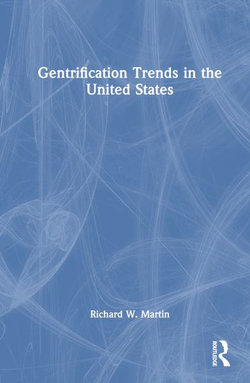Gentrification Trends in the United States is the first book to quantify the changes that take place when a neighborhood's income level, educational attainment, or occupational makeup outpace the city as a whole - the much-debated yet poorly understood phenomenon of gentrification. Applying a novel method to four decades of U.S. Census data, this resource for students and scholars provides a quantitative basis for the nuanced demographic trends uncovered through ethnography and other forms of qualitative research. This analysis of a rich data source characterized by a broad regional and chronological scope provides new insight into larger questions about the nature and prevalence of gentrification across the United States.
- Has gentrification become more common over time?
- Which cities have experienced the most gentrification?
- Is gentrification widespread, or does it tend to be concentrated in a small number of cities?
- Has the nature of gentrification changed over time?
Ideal reading for courses in real estate, urban planning, urban economics, sociology, geography, econometrics, and GIS, this pathbreaking addition to the urban studies literature will enrich the perspective of any scholar of U.S. cities.




Share This Book: